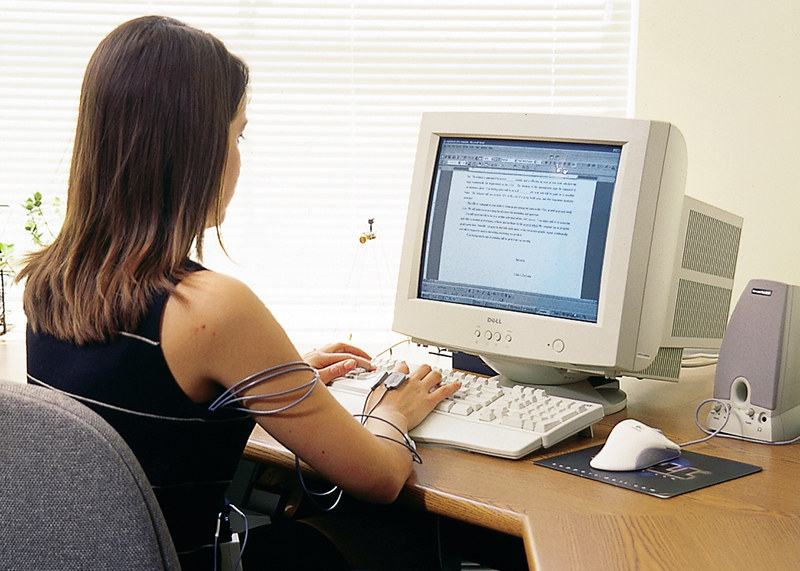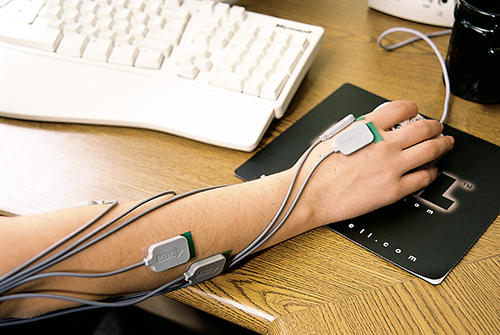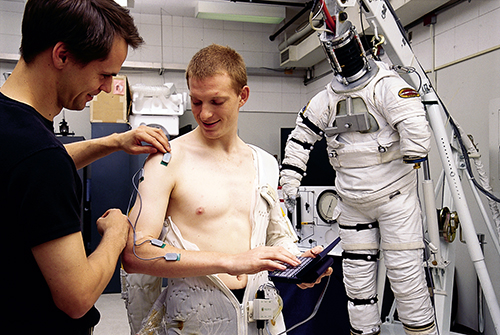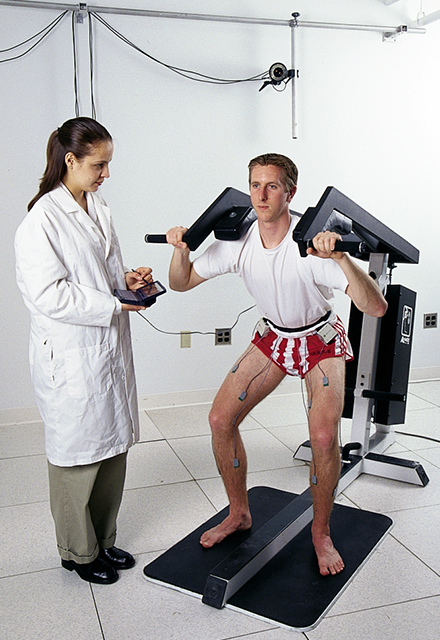
Monitoring on the Move
Given the recent investigation into the physiological effects of space on famed astronaut John Glenn, it is evident that NASA scientists are interested in researching how microgravity affects the human body. Among the areas of interest is the muscular performance of astronauts. Muscular activity, however, is not easily monitored in space with traditional and cumbersome electromyographic (EMG) machines. This has changed with the assistance of Small Business Innovation Research (SBIR) funding from NASA's Johnson Space Center. NASA, along with other government agencies, has helped Delsys, Inc., of Boston, Massachusetts, develop the MyoMonito® EMG system—a wearable 4-channel device that offers a new dimension in electromyography. Delsys, a spinoff company from the NeuroMuscular Research Center at Boston University, is also developing an 8-channel version of the MyoMonitor.
Currently, the battery-powered device is capable of storing over 3 hours of continuous 4-channel data and has a convenient carrying case that offers the freedom to monitor muscle performance with a portable cable-free unit. The MyoMonitor is being marketed for monitoring rehabilitative therapy, work place injury prevention, sports medicine, ergonomics, exercise training, and motion studies.
Now muscle performance can be monitored away from the laboratory in unconstrained environments. The complete instrument can be worn around the waist and weighs approximately one kilogram. It is now possible to monitor muscle activity during a tennis serve, a baseball pitch, or a golf swing.
All of the company's systems use an active parallel bar electrode. This type of electrode requires no skin preparation or conductive gel. Two of these electrodes are offered for the Delsys Bagnoli-series EMG systems: a two-bar differential electrode and a three-bar double differential electrode. The three-bar electrode is particularly useful for reducing the cross-talk from overlapping signals of adjacent muscles. The Bagnoli-series in the Delsys product line consists of 2-, 4-, and 8-channel systems. The MyoMonitor uses a two-bar single differential electrode.
During vigorous activity, the movement of the skin causes electrode detection surfaces to become compromised. Because of the accumulation of sweat, for instance, EMG signals become contaminated. This makes the electrode-skin interface the limiting factor in traditional EMG equipment. The MyoMonitor's capacity for detection is significant because it can monitor muscle activity, despite rigorous conditions. The system has an easy-to-apply, effective electrode-skin interface that facilitates the uncontaminated detection of EMG signals. The ability to make such recordings, for example, enables novel experiments aboard the International Space Station for investigating the effect of microgravity on muscle performance.
Once collected, data can be transferred to a regular personal computer and analyzed with the EMGworks® software package, which provides real-time data collection and a comprehensive suite of analysis programs. These products are proof of the company's goal of providing the highest quality EMG equipment and promoting the proper use of surface electromyography. Additionally, the company actively seeks partners for developing EMG-based consumer products.
MyoMonitor® is a registered trademark of Delsys, Inc.
EMGworks® is a registered trademark of Delsys, Inc.

The MyoMonitor® can monitor carpal tunnel syndrome in a workplace setting without negatively affecting workers' ability to perform routine tasks.

The MyoMonitor® is being evaluated to study the muscles of astronauts in the weightless environment of space.

The Delsys system can be used by physical therapists and sports medicine clinicians to evaluate the condition of a patient recovering from an injury.














